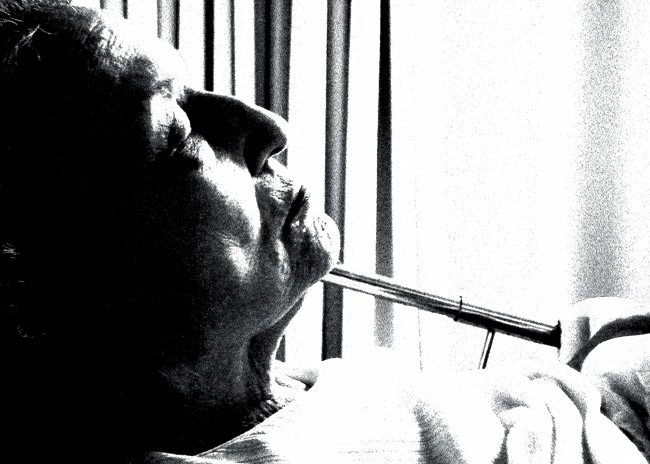
By Nancy Smith
How sad is it that Florida, the state with the largest per-capita population over age 65, invests zero dollars in Alzheimer’s research?
Zero.
An estimated 523,000 Floridians have Alzheimer’s disease today. And you know what? By 2025, with the “silver tsunami” of baby boomers rolling toward retirement, that number is expected to leap 40 percent.
One in 40 Floridians has the disease; over the age of 85, it’s 1 of 2 — or, half. Believe me, up close and personal Alzheimer’s numbers will stagger a billygoat.
This mysterious thief of a disease that slowly jumbles the brain, steals the mind and leaves no survivors sucks up $1 billion of the state’s $17 billion annual Medicaid budget. And beyond the cost to taxpayers is the damage and desperation it inflicts on thousands upon thousands of Florida families.
Medicare, by the way, does not pay for extended nursing care. Few have or can afford long-term care insurance, which is unavailable in the early stages of the disease. There is nothing but the underfunded, ultra-restrictive Medicaid program that requires a person to become impoverished to get into a nursing home, or get home care.
We have millions of Americans, loved ones, carrying the greater burden in caring and paying for the care of Alzheimer’s patients. Inadequate as it is for Alzheimer’s victims, Medicare spends $40 billion a year to provide them with medical care; that will increase.
Give the state its due, it invested $100 million in developing the Byrd Alzheimer’s Institute on the campus of the University of South Florida. But not since 2008 has it thrown in a dime for research. And when the state fails to make an investment, you can kiss grant money and researchers goodbye. You won’t attract either.
But wait.
The Live Commentary
The state’s indifference aside, researchers at Byrd are convinced they’re on the edge of a breathtaking breakthrough in Alzheimer’s treatment and ultimate prevention.
“I’m absolutely convinced that by 2020 we will be able to prevent Alzheimer’s disease,” said Dave Morgan, director of the University of South Florida Health Byrd Alzheimer’s Institute. “It’s a promise I’ve made to the people of Florida.”
Morgan claims doctors can keep Alzheimer’s disease at bay just as they do heart disease, by concentrating on risk factors like high blood pressure and high cholesterol.
He said technological advances and discoveries at Byrd and elsewhere have shown him how to combat the disease.
Now physicians don’t have to wait for an autopsy to figure out what’s going on in the brain. They have PET scans (positron emission tomography) that let them see Alzheimer’s as it progresses.
“We can detect individuals with the nerve-killing amyloid proteins associated with Alzheimer’s early,” Morgan explained. “and begin treating them before symptoms — which is permanent brain damage — show themselves.”
What Morgan and the Byrd Institute want is a modest $3 million from the Legislature to attract grants and more researchers, to make a cure happen right here in Florida by 2020.
 I say “a modest $3 million” for a reason:
I say “a modest $3 million” for a reason:
“If we were to delay the institutionalization of every indigent patient in Florida by two days,” said Morgan, “we would have made back every penny of that $3 million. It would cost us nothing.”
Legislators, please pay attention here.
Right now ours is one of only 11 states in the nation without an Alzheimer’s action plan to meet the crush of baby boomers heading our way — though Rep. Matt Hudson and Sen. Garrett Richter, both Republican and both from Naples, are co-sponsoring such a bill this session.
And Alzheimer’s falls further and further behind in terms of the money spent on the disease that goes to research: for AIDS, 20 percent; for cancer, 4 percent; for cardiovascular diseases, 2 percent; and for Alzheimer’s, less than .5 percent — that’s less than one-half of 1 percent.
By 2050, say the bean-counters in Washington, the care of Alzheimer’s patients in America will surpass the nation’s military budget and cost an annual $800 billion.
Florida, meanwhile, can be so special.
It can make a laughingstock of the bean-counters’ numbers.
Florida right now can recognize that ignoring Alzheimer’s disease has nothing to do with frugality, that it is false economy, plain and simple.
Our leaders can choose to invest in the researchers, believe in the possibilities, and go for the big bang of saving lives and saving money, all at the same time.
![]()
Nancy Smith is the editor of SDunshine State News. Reach her by email here.





























Julie Lowell says
Most people overestimate the cost of a good long-term care policy. A healthy, married couple in their mid/late fifties, can share a policy that starts off with over a half million in benefits for about $100 per month per spouse.
There’s a new type of government-approved long-term care policy that can protect your assets from Medicaid even after the policy runs out of benefits. Here’s an explanation of how these policies work:
http://bit.ly/How-Partnership-Policies-Protect-Assets